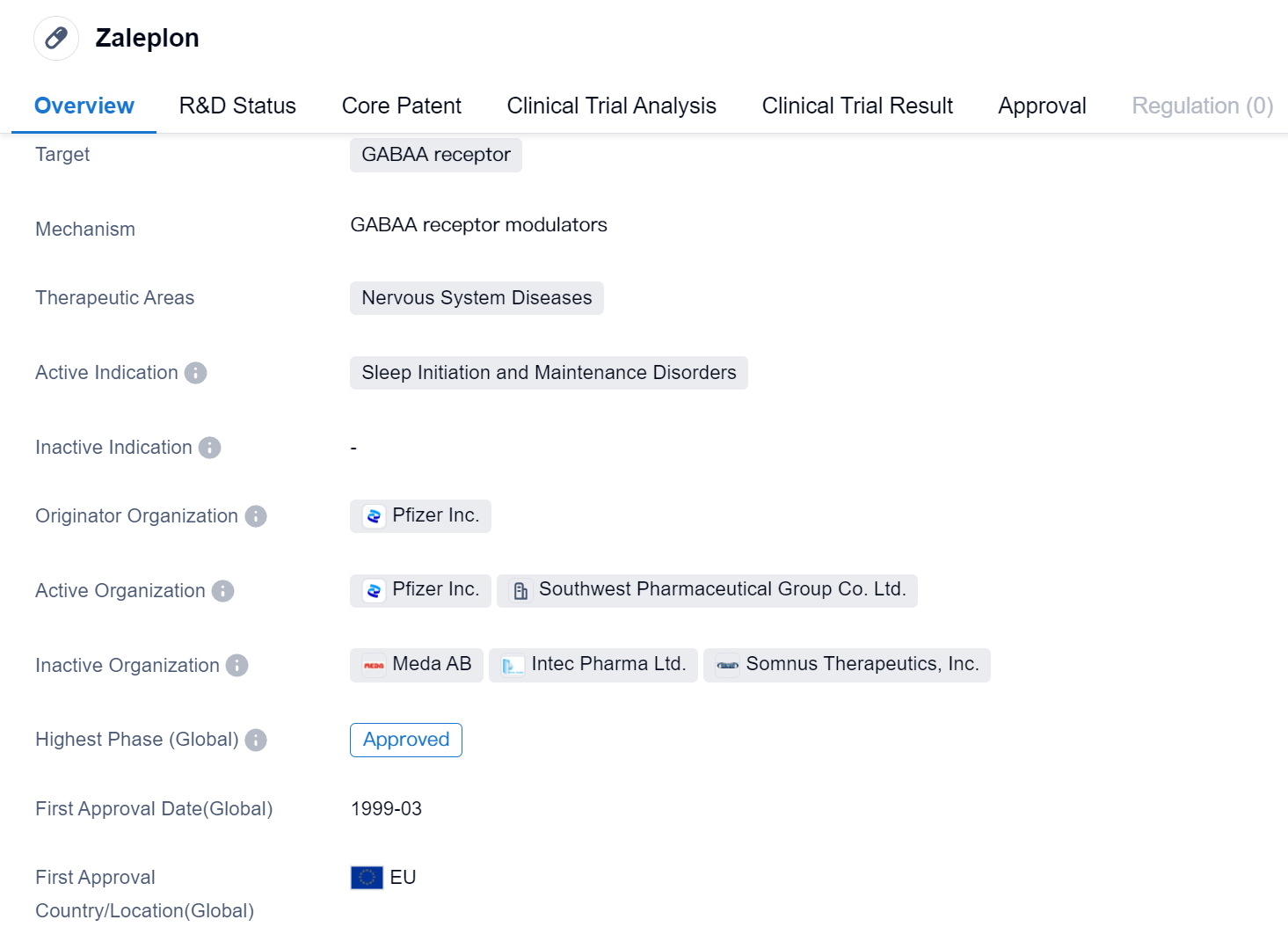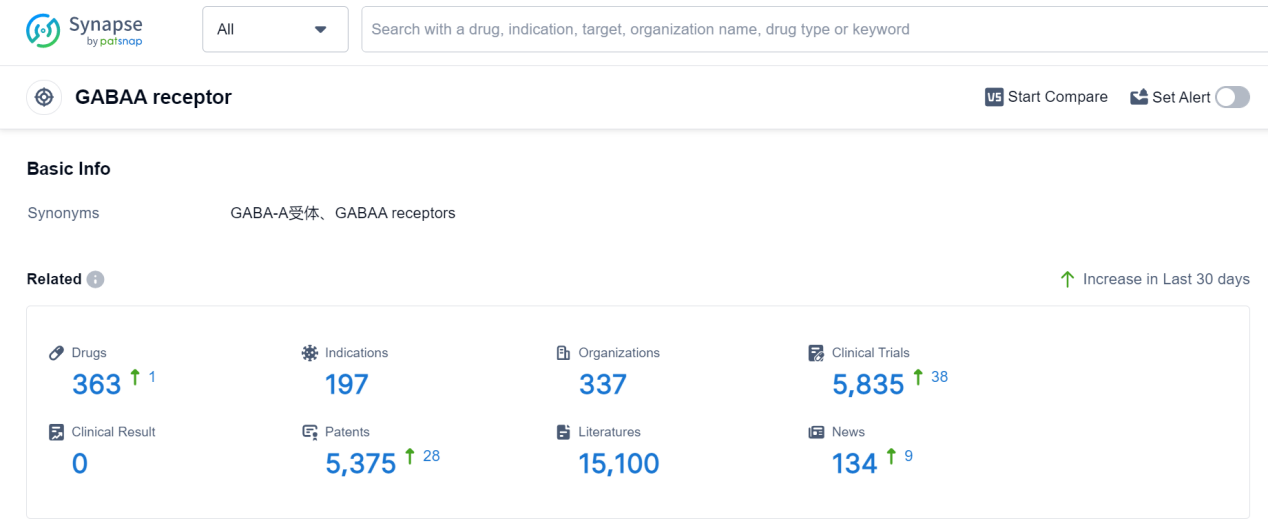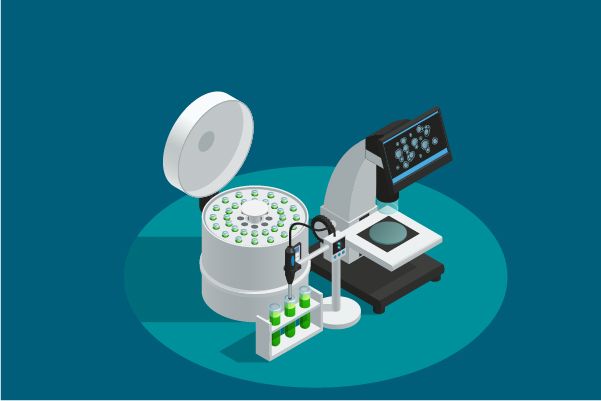Exploring Zaleplon's Revolutionary R&D Successes
Zaleplon's R&D Progress
Zaleplon is a small molecule drug that targets the GABAA receptor and is primarily used in the treatment of sleep initiation and maintenance disorders. It falls under the therapeutic area of nervous system diseases. The drug was developed by Pfizer Inc., a renowned pharmaceutical company.
Zaleplon received its first approval in the European Union in March 1999, making it available for use in that region. It has also obtained approvals in other countries. The highest phase of development for Zaleplon is approved, indicating that it has successfully completed all necessary clinical trials and regulatory requirements to be deemed safe and effective for its intended use.
As a small molecule drug, Zaleplon is designed to interact with the GABAA receptor, which plays a crucial role in the regulation of sleep. By targeting this receptor, Zaleplon helps to initiate and maintain sleep, making it a valuable treatment option for individuals suffering from sleep disorders.
The approval of Zaleplon in multiple countries highlights its global recognition and acceptance as a reliable therapeutic option. Its approval in China, a significant market for pharmaceuticals, further emphasizes its potential impact and market reach.
Since its first approval in 1999, Zaleplon has been used to address sleep initiation and maintenance disorders, providing relief to patients who struggle with these conditions. Its efficacy and safety profile have been established through rigorous clinical trials and regulatory assessments.
👇Please click on the image below to directly access the latest data (R&D Status | Core Patent | Clinical Trial | Approval status in Global countries) of this drug.
Mechanism of Action for Zaleplon: GABAA receptor modulators
From a biomedical perspective, GABAA receptor modulators refer to a class of drugs or compounds that interact with the GABAA receptors in the central nervous system. GABAA receptors are a type of neurotransmitter receptor that bind to gamma-aminobutyric acid (GABA), which is an inhibitory neurotransmitter. These receptors play a crucial role in regulating neuronal excitability and maintaining the balance between excitation and inhibition in the brain.
GABAA receptor modulators can have different effects on the GABAA receptors. Some modulators enhance the activity of GABA, leading to increased inhibitory effects and a reduction in neuronal activity. These are known as positive allosteric modulators (PAMs) or GABA agonists. They are often used as sedatives, anxiolytics (anti-anxiety medications), or anticonvulsants.
On the other hand, there are GABAA receptor modulators that decrease the activity of GABA or inhibit the receptor's function. These are called negative allosteric modulators (NAMs) or GABA antagonists. They may be used for specific purposes, such as counteracting the sedative effects of other drugs or studying the role of GABA receptors in certain conditions.
GABAA receptor modulators have diverse therapeutic applications due to their ability to influence the balance of excitatory and inhibitory signals in the brain. They can be used to treat conditions such as anxiety disorders, insomnia, epilepsy, muscle spasms, and even as anesthetics. However, it's important to note that the specific mechanism and effects of each modulator can vary, and their use should always be guided by medical professionals.
Drug Target R&D Trends for Zaleplon
The GABAA receptor is a crucial component of the human body's central nervous system. It is a type of neurotransmitter receptor that binds to the neurotransmitter gamma-aminobutyric acid (GABA). Activation of the GABAA receptor leads to the inhibition of neuronal activity, resulting in a calming and sedative effect. This receptor plays a vital role in regulating anxiety, sleep, muscle relaxation, and the prevention of seizures. Additionally, it is the target of various pharmaceutical drugs, such as benzodiazepines, which enhance the receptor's activity to treat conditions like anxiety disorders, insomnia, and epilepsy. Understanding the role of the GABAA receptor is essential for developing effective medications that modulate its function.
According to Patsnap Synapse, as of 7 Sep 2023, there are a total of 363 GABAA receptor drugs worldwide, from 337 organizations, covering 197 indications, and conducting 5835 clinical trials.
👇Please click on the picture link below for free registration or log in directly if you have a freemium account, you can browse the latest research progress on drugs, indications, organizations, clinical trials, clinical results, and drug patents related to this target
Conclusion
In summary, Zaleplon is a small molecule drug developed by Pfizer Inc. that targets the GABAA receptor. It is primarily used in the treatment of sleep initiation and maintenance disorders, falling under the therapeutic area of nervous system diseases. With approvals in multiple countries, including China, Zaleplon has gained global recognition and acceptance. Its first approval in the European Union in 1999 marked its entry into the market, and it has since provided relief to patients suffering from sleep disorders.






